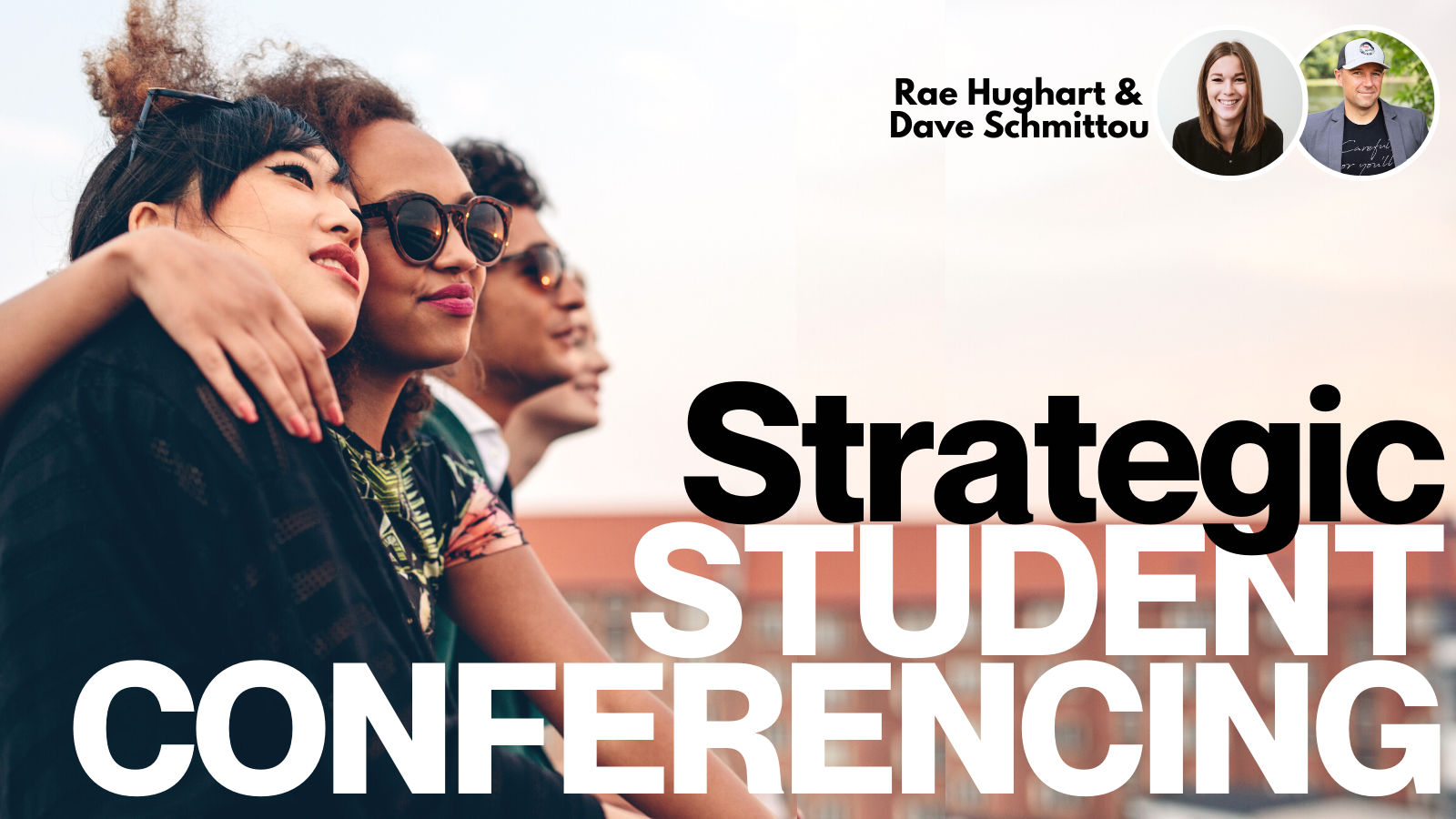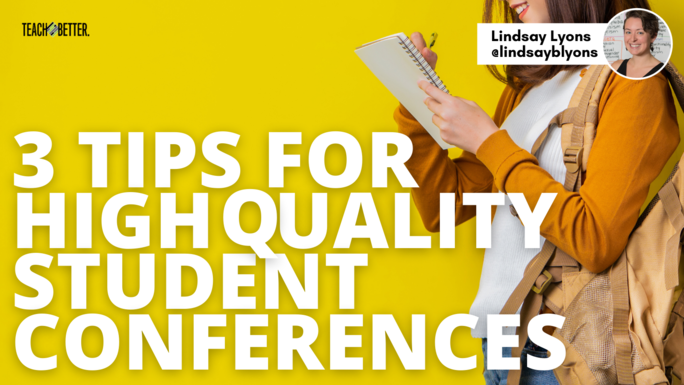TL;DR:
- Make student conferences a part of your unit arc.
- Give high quality feedback outside of your conferences.
- Invite students to lead and give them ownership in conversations about their grade.
- These tips can support the regularity, efficiency and effectiveness, and student ownership of conferences.
For the last half of my teaching career, weekly student conferencing has been a staple of my classes. The benefits of regular 1:1 conferencing with students have far surpassed what I initially had in mind. I have improved student learning. I have saved time for myself and my students. And I’ve deepened student learning as evidence through their thoughtful revisions to their work following a conference.
For educators interested in getting started with student conferencing or improving their current conferencing protocols, here are my top 3 tips.
Make student conferencing part of your unit arc.
I write a lot about the value of designing curriculum with a reusable unit arc. Basically, it’s the pattern of protocols or lesson activities that span a typical unit. Prioritizing and making space for student conferencing at the curriculum design level relieves the pressure of needing to “take time away from the curriculum” to meet with students.
Once I made student conferencing part of my unit arc, I had one hour each week that was dedicated to conferencing with students. As a result, I met with a lot more students than when I was trying to “add in” a day of conferencing to an already packed schedule.
If students are in the habit of receiving specific formative feedback during class, they already have the language to articulate what they have been focused on improving and what they still need help with. Click To TweetGive high quality feedback outside of your conferences.
If students are in the habit of receiving specific formative feedback during class, they already have the language to articulate what they have been focused on improving and what they still need help with. Research shows that providing immediate feedback during class has a strong positive impact on student learning. It helps students self-correct in the moment and can increase the speed of student learning by 70-80% (Hattie, 2012)!
One strategy that has helped me find more time to give formative feedback during a lesson is to decrease my teacher talk time and increase student work time. Giving students less information up front and more time to discover and grapple with the application of content amplifies student learning. And it simultaneously gives teachers time to quickly scan student work (either in person or via shared digital documents like Google Docs) and offer quick corrections as needed.
Another feedback strategy that has helped me equip students with a shared understanding of what quality work looks like and the specific language to name it is providing feedback on student work products through screen recordings. I use Screencastify or Loom as a tool to record a video of my feedback as I highlight on my screen specific parts of the student’s work.
This serves as an asynchronous student conferencing strategy. It can be used in place of live conferences for teachers who are struggling to find the time for conferences. It can also reinforce the culture of conferencing to share specific feedback in between live conferences. Recording my voice and my walkthrough of students’ work is faster than writing out my feedback. It improves students’ understanding of my feedback given the multiple modalities involved in the video. And students have told me they value this specific mode of feedback more than written feedback.
[scroll down to keep reading]
Invite students to lead.
My units are always project-based. This supports student and teacher assessment because we can use the project rubric to assess students’ work on the project throughout the course of any unit. (I’ve created free mastery-based rubric templates that you can grab here.)
Thus, student conferences are often grounded in how students are doing in relation to the course (and project/rubric) outcomes. I typically ask students to bring a physical (or digital) rubric to our conference time on which they have self-assessed their level of mastery for each outcome.
This way, we are co-constructing a student’s grade during a conference. Particularly after the first few meetings, students usually self-assess their work almost identically to how I would assess them.
Procedurally, students will start the conference by walking me through the rubric and their annotations. For each outcome, I will either agree (if they have presented me with sufficient evidence for the grade) or disagree (using evidence of the student’s work to explain why) and annotate the rubric accordingly. This collaboratively annotated rubric then becomes the document I can pull out during family conferences to show how a student is doing.
Whether you’re just beginning to use conferences in your class or fine tuning a system of conferencing that’s been in place for years, these tips can support the regularity, efficiency and effectiveness, and student ownership of conferences. If you have more tips to add, please share them! I love learning alongside brilliant educators like yourself.
About Lindsay Lyons
Lindsay Lyons is an educational consultant who works with teachers and school leaders to inspire educational innovation for racial and gender justice, design curricula grounded in student voice, and build capacity for shared leadership. Lindsay taught in NYC public schools, holds a PhD in Leadership and Change, and is the founder of the educational blog and podcast, Time for Teachership.



